Visit our Projects page to find our more about our research projects.
Need assistance? Contact us at
help@sit.uct.ac.za
Project Showcase
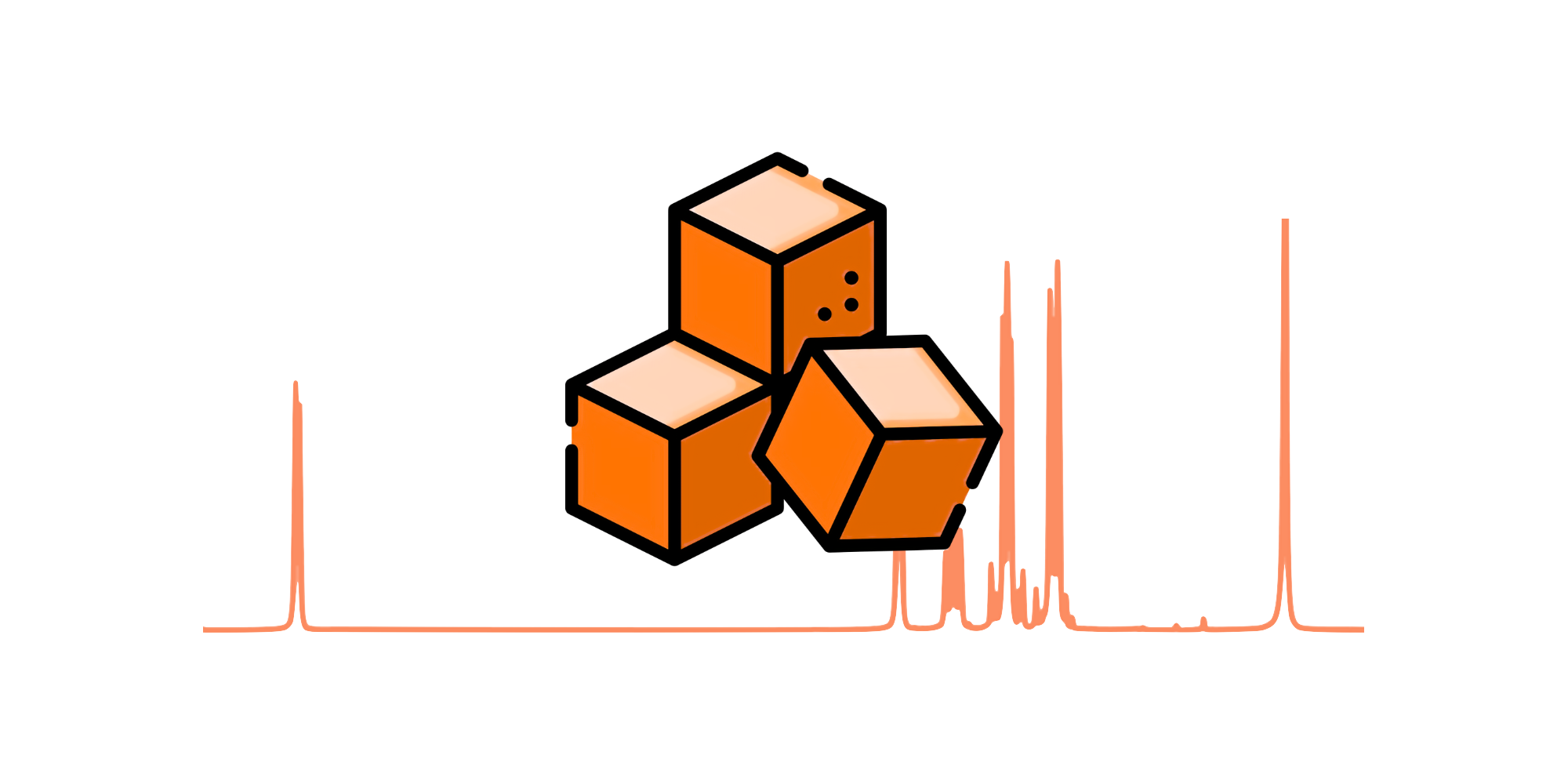
CarbPred
Using machine learning to predict nuclear magnetic resonance spectra for carbohydrates via graph neural networks
By: Channing Bellamy, Unays Bhad, Matthew Dean
Supervised By: Michelle Kuttel, Jan Buys
Carbohydrates are complex molecules, critical to drug and vaccine development. Their study often involves the analysis of nuclear magnetic resonance (NMR) spectra, which are challenging to interpret, even for experts. We build upon prior work, GeqShift,...
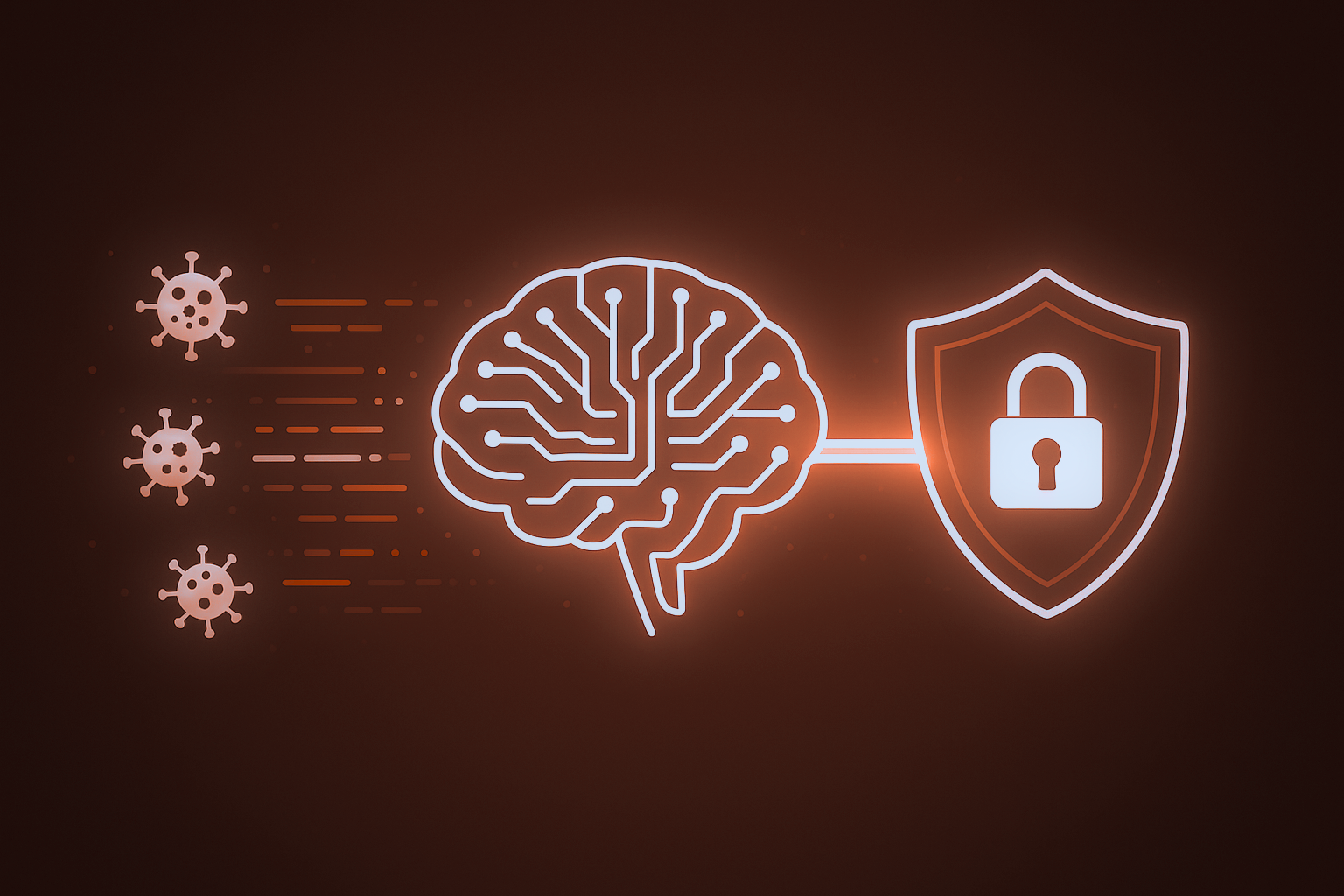
Toward Robust Malware Classification
Data Augmentation, Topology Optimisation, and Concept Drift Monitoring
By: Shaylin Velen, Callum Musselwhite, Simphile Mkhize
Supervised By: Geoff Nitschke
Our project investigates the application of various machine learning techniques for malware detection. As malware engineers improve and release new variants, identifying whether a file is malicious becomes increasingly challenging. This malware evolution...
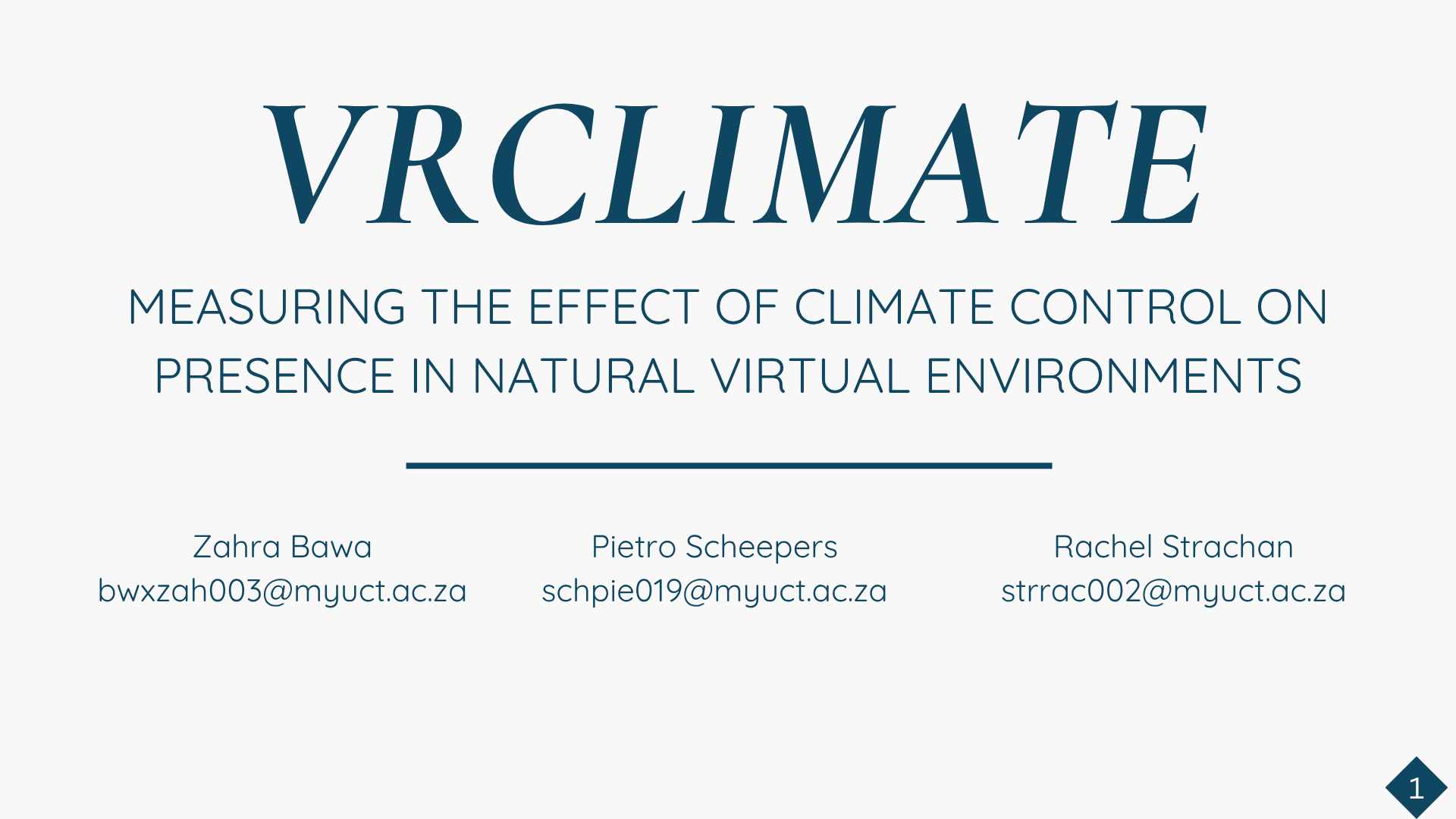
Measuring the effects of climate control on presence in natural virtual environments
VRClimate
By: Pietro Scheepers, Zahra Bawa, Rachel Strachan
Supervised By: James Gain
Virtual Reality, or VR, is defined as a technology that allows a user to interact with a computer-simulated environment, whether that environment is a simulation of the real world or an imaginary world. Currently, the main focus of creating these virtual...

SOILAI
Generating Soilscapes with Random Forets
By: Josh Britz, James Ridley
Supervised By: James Gain, Patrick Marais
Soils support plant life and form an important aspect of ecological biodiversity. Soil data, however, is often absent from digital terrains but nevertheless remain important in areas of computational ecology. Digital elevation maps are a common artefact...
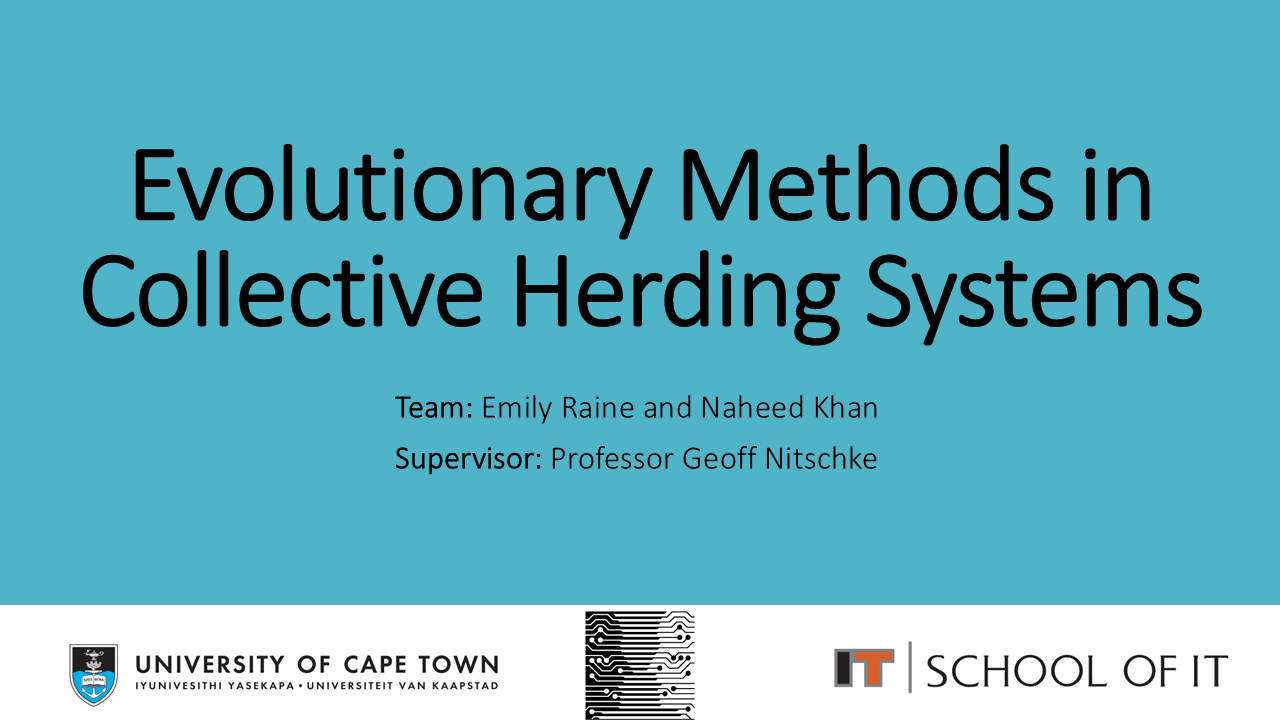
Evolutionary Methods in Collective Herding Systems
By: Emily Raine, Naheed Khan
Supervised By: Geoff Nitschke
This project extended a 2D sheep-herding multi-agent system, where dog agents herd sheep into a target zone. We investigated the effectiveness of hybrid evolutionary methods in dynamic environments and compared the performance of agents with fixed versus...
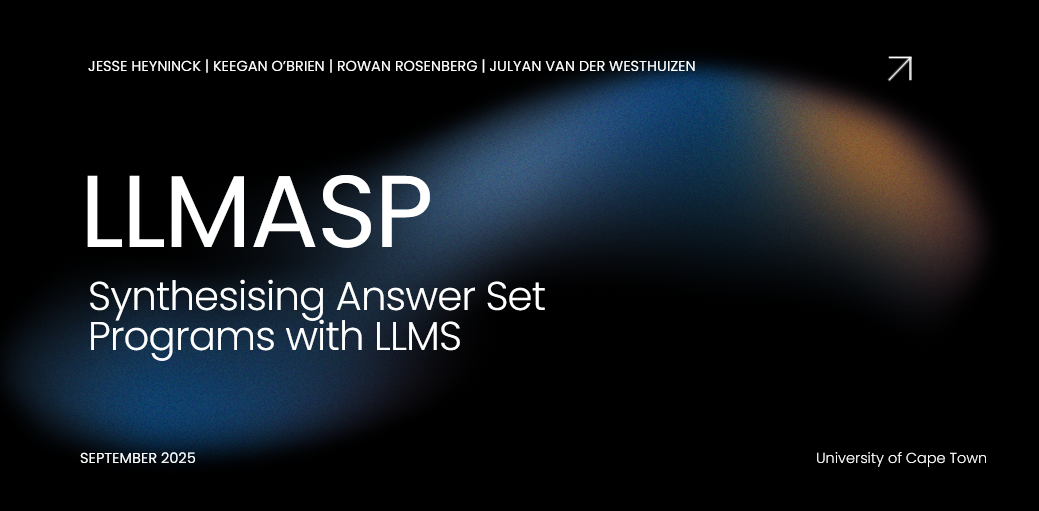
LLMASP: Synthesising Answer Set Programs with LLMs
By: Rowan Rosenberg, Julyan Van Der Westhuizen, Keegan O'Brien
Supervised By: Jesse Heyninck
Answer Set Programming (ASP) is a declarative programming framework. It is a powerful tool for solving complex logical and combinatorial problems, with many modern, real-world applications. However, its power is limited by a phenomenon known as the...
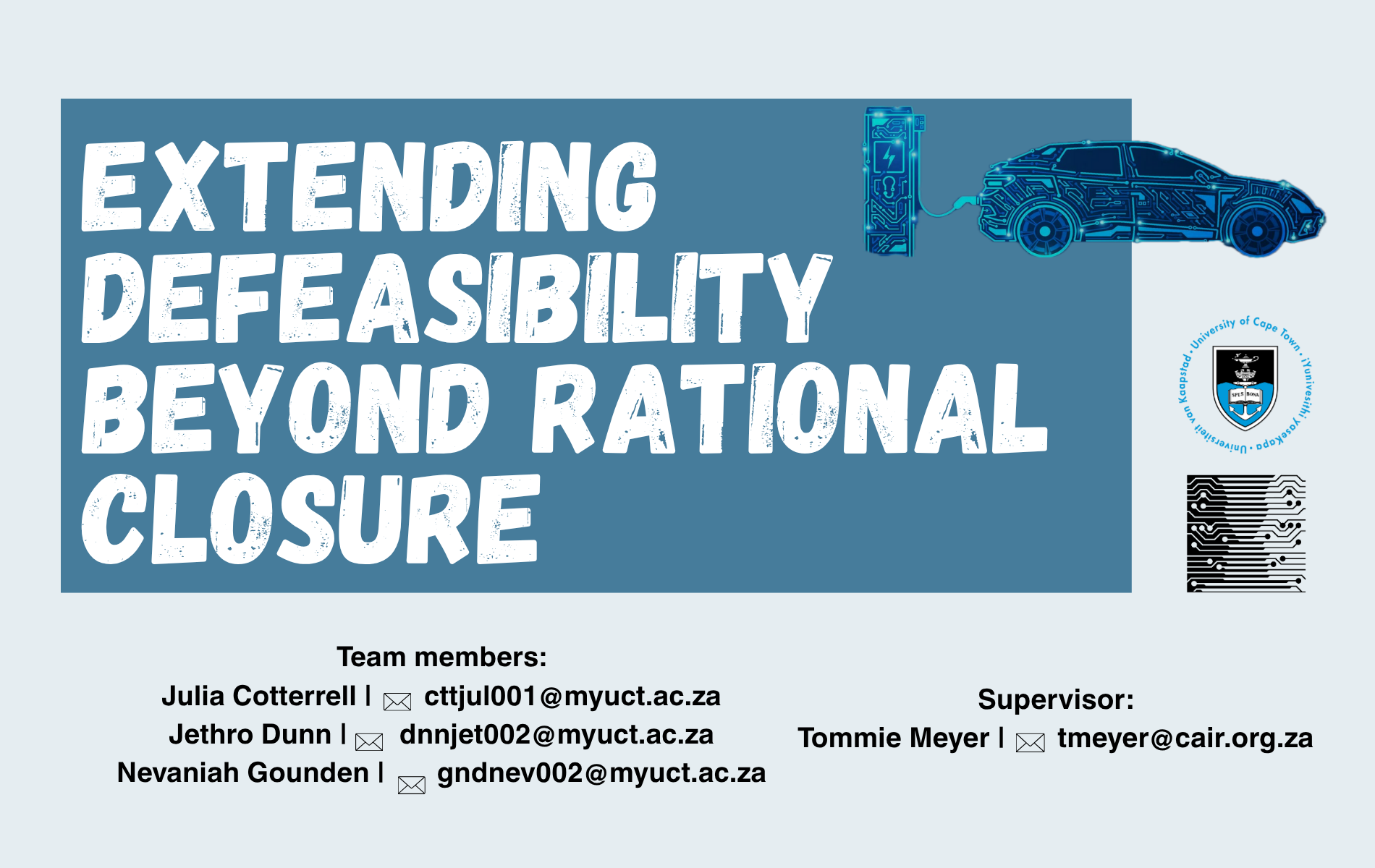
EXTRC
By: Julia Cotterrell, Nevaniah Gounden, Jethro Dunn
Supervised By: Tommie Meyer
This project explores how defeasible reasoning, a form of non-monotonic logic, can be extended and made more interpretable beyond Rational Closure (RC). The optimisation of RC was combined with natural language processing for knowledge base (KB) creation...

Improving Research Question Quality with Controlled Natural Languages and Large Language Models
RQ-CNL
By: Rector Ratsaka, Emma Van Der Berg, Mandikudza Dangwa
Supervised By: Zola Mahlaza
Formulating a well-defined research question (RQ) is a crucial yet often challenging step in the research process, particularly for trainee researchers. Poorly constructed RQs can lead to ambiguous objectives and ineffective methodologies, reducing the...
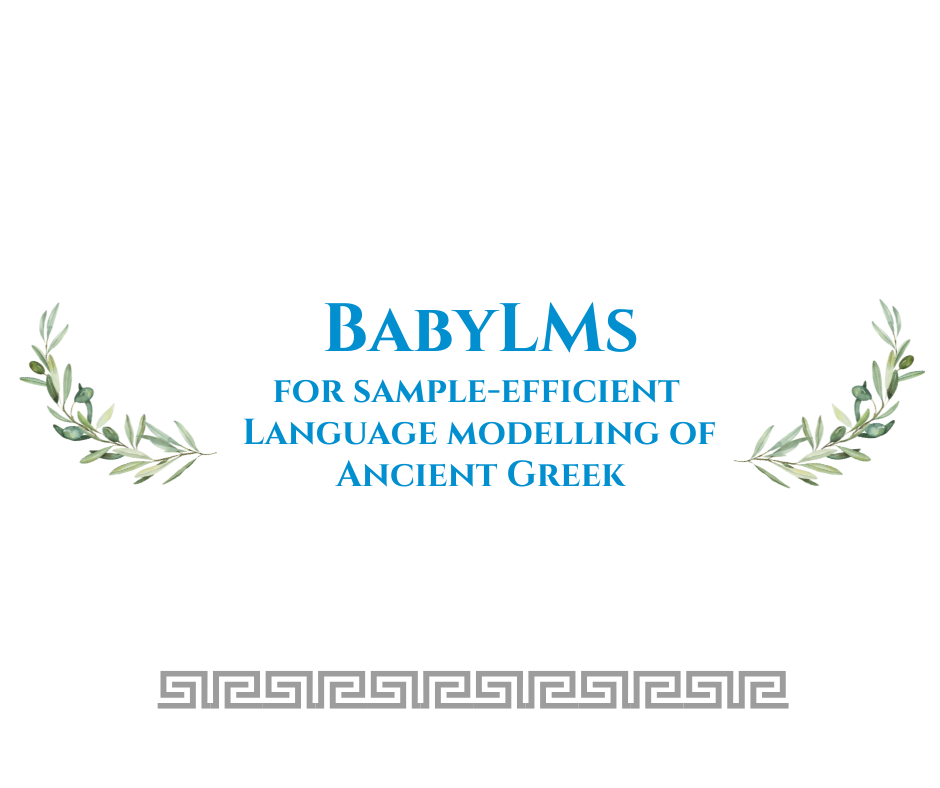
BabyLMs for Sample-Efficient Language Modelling of Ancient Greek
Investigating the suitability of BabyLM architectures for language modelling in the low-resource context of Ancient Greek.
By: Dimitri Dalakas, Stelio Dalakas, Kimon Christelis
Supervised By: Francois Meyer
Pretrained Language Models (PLMs) have achieved state-of-the-art performance across a wide range of Natural Language Understanding tasks in recent years. This success has relied on vast amounts of training data, which are not readily available for...
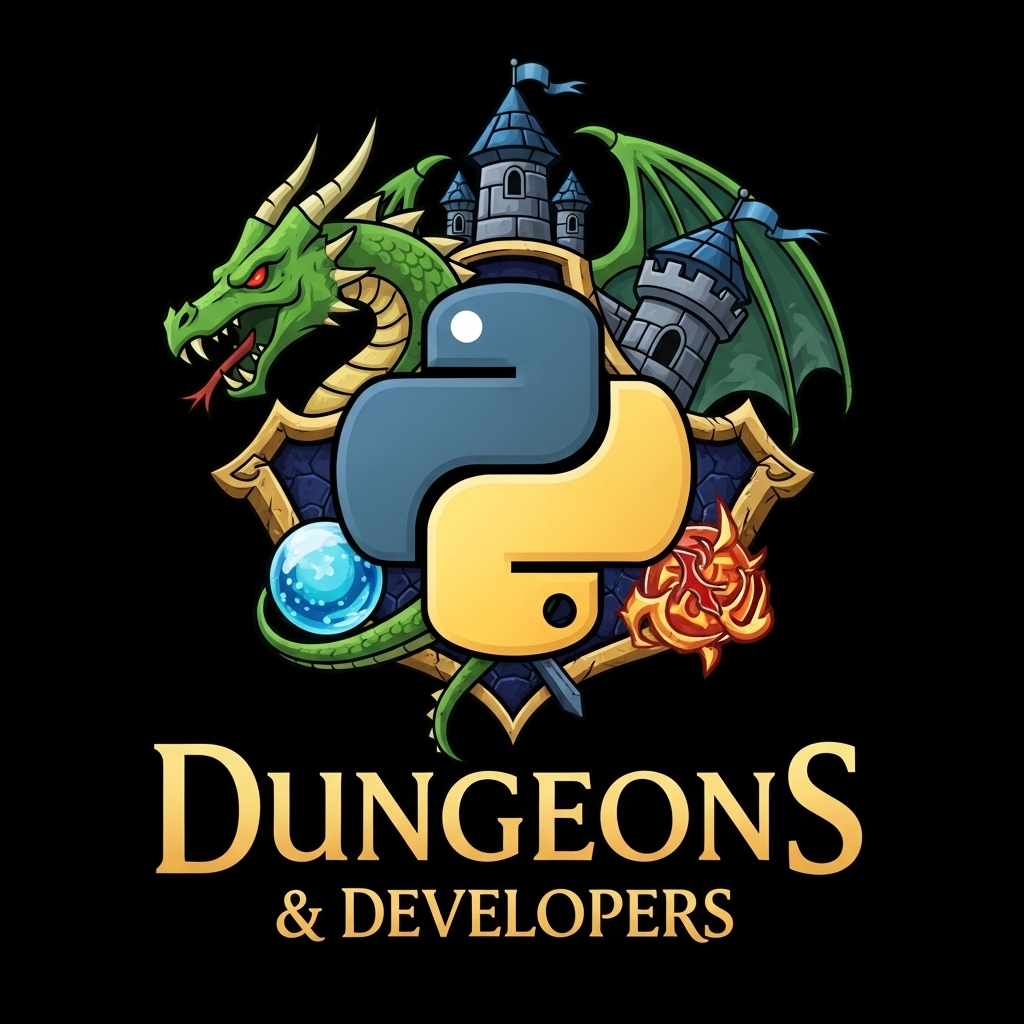
Dungeons and Developers
Evaluating Real-Time Competitive Game-based Learning in Introductory Computer Science
By: Mahir Moodaley, Kai Connock, Ibrahim Abdou
Supervised By: Gary Stewart
Many first-year students, especially those with no previous experience, have difficulties learning and understanding Computer Science. This is due to a variety of factors including lack of engagement and low motivation. Students who have difficulty with...
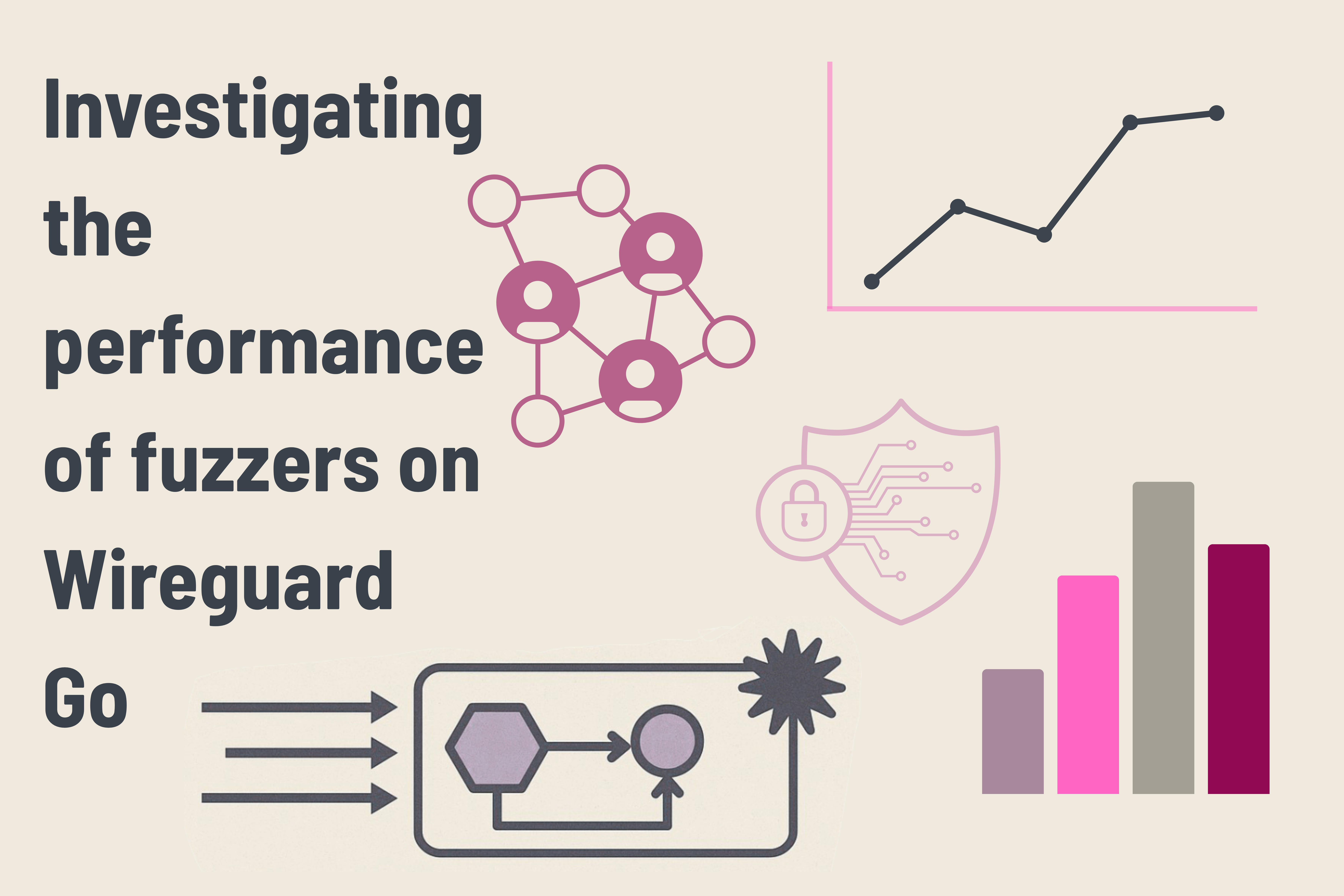
Securing the digital highway
Investigating the performance of fuzzers on Wireguard-Go
By: Thalia Hawthorn, Michal Sacks
Supervised By: Josiah Chavula
Network-based tools have become a central component in the operation of many institutions such as businesses, universities and governments. The growing amount of sensitive data being transported over networks necessitates innovation to ensure these...

2025 Computer Science Honors Generative AI Applied to Student Guide (GAISG) Project
GAISG
By: Angelo Yang, Nova Adams-Duma, Daanyaal Ballim
Supervised By: Gary Stewart
The Generative AI Applied to Student Guide (GAISG) project reimagines UCT’s “Science is Tough: But So Are You” student guide as an interactive, multimodal learning platform. Traditional PDF-based guides often fail to engage students, limiting...
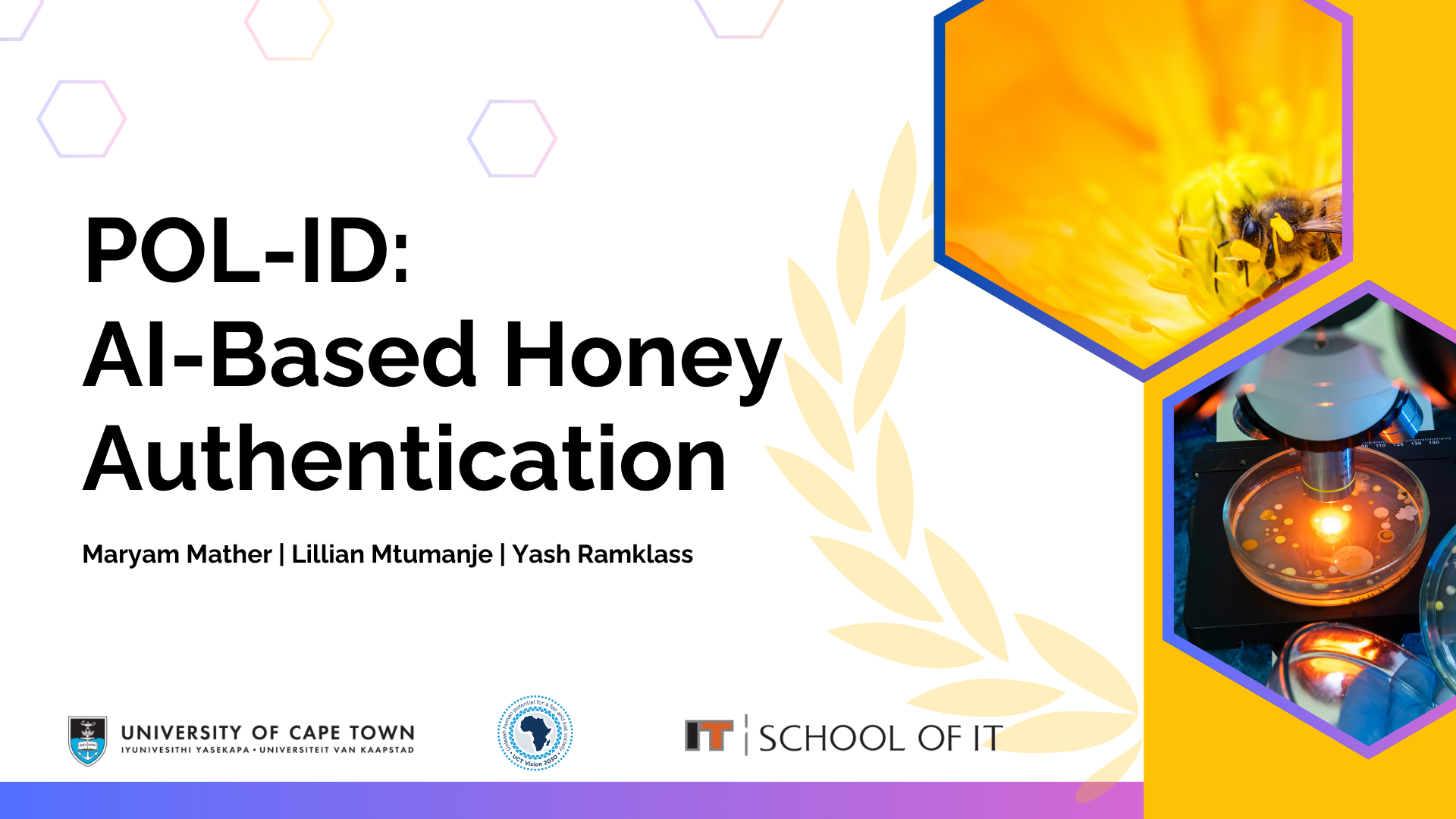
POL-ID
AI-Based South African Honey Authentication
By: Yash Ramklass, Maryam Mather, Lillian Mtumanje
Supervised By: Patrick Marais, Cesarina Edmonds-Smith, Janais Delport
Authenticating the botanical origin of honey is crucial for ensuring product integrity, consumer trust, and sustainable trade. However, manual pollen identification under a microscope is time-consuming and prone to human error. To address this, our...

3DHAR-AI
Human Activity Recognition and Prediction using Deep Neural Networks
By: Kishalan Pather, Andrew Erasmus, Temi Aina
Supervised By: Deshen Moodley
The growing field of HAR sees many applications from remote health monitoring for the elderly to smart homes that adapt to our daily routines. In our work, we investigated the performance of three state-of-the-art spatio-temporal graph neural networks...
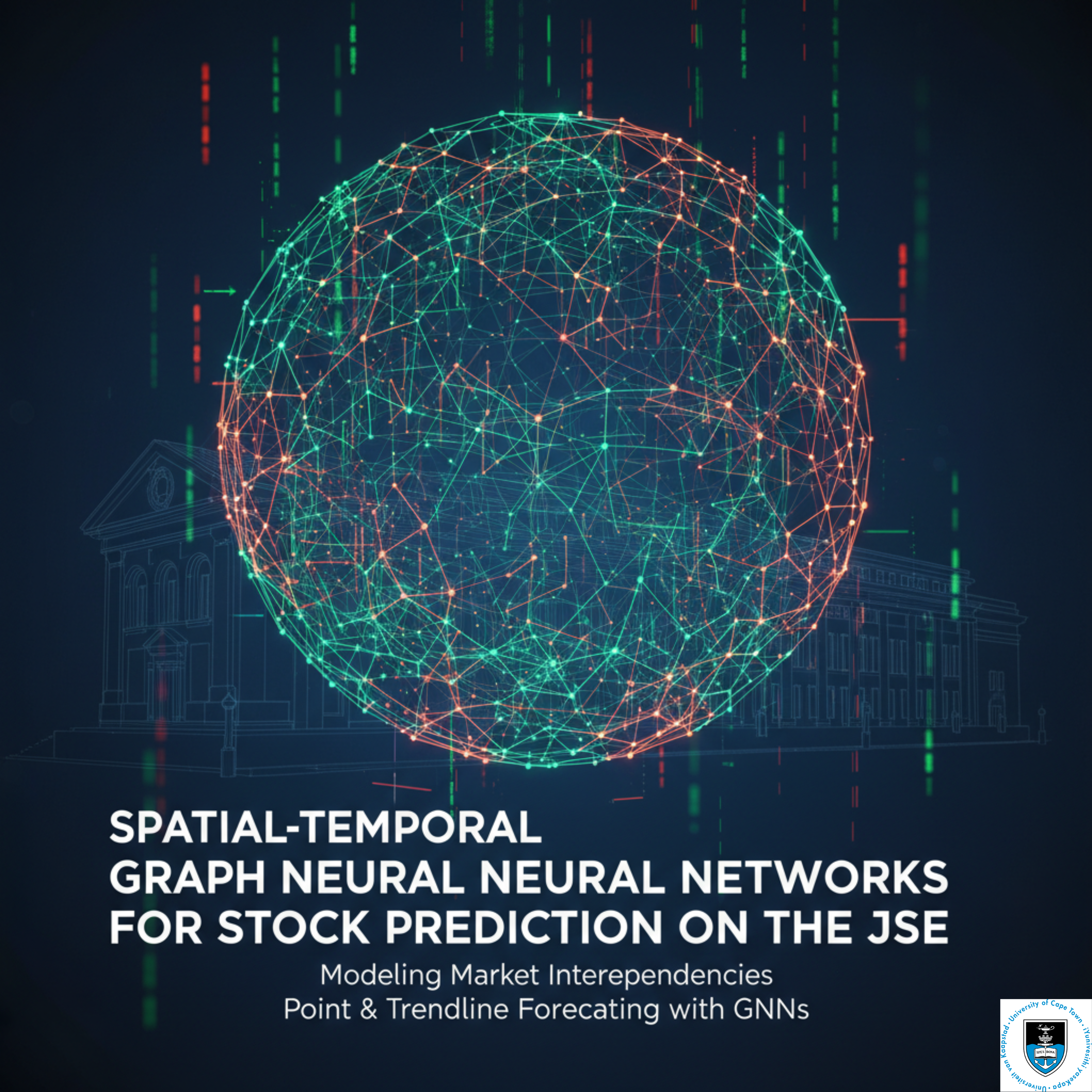
AI Share Trader
By: Kabelo Mbayi, Siyanda Makhathini, Saul Chipwayambokoma
Supervised By: Deshen Moodley
Traditional deep learning models for stock forecasting often overlook the complex interdependencies between financial assets. This study investigates the efficacy of Spatio-Temporal Graph Neural Networks (ST-GNNs) for stock prediction on the Johannesburg...

deepEEG
Deep Learning for Infant-Brain EEG Modelling
By: Tziyona Cohen, Caleb Bessit
Supervised By: Francois Meyer, Jonathan Shock
Electroencephalography (EEG) measures electrical brain activity and is a common tool for monitoring neurodevelopment and diagnosing brain disorders. However, analysing EEG data is challenging due to its complex interpretability and inter-subject...
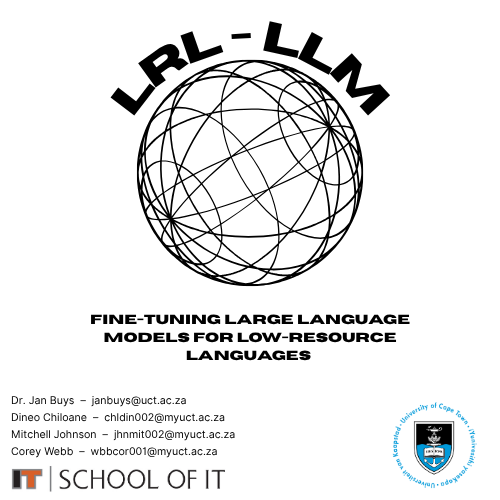
Fine-Tuning Large Language Models for Low-Resource Languages
By: Mitchell Johnson, Dineo Chiloane, Corey Webb
Supervised By: Jan Buys
Most Large Language Models (LLMs) have been trained either on English text only or on text from multiple languages, but with a severe imbalance between data from different languages due to orders of magnitude differences in available web text per...

IsiXhosa Medical Machine Translation
By: Elijah Sherman, Nick Matzopoulos, Malibongwe Makhonza
Supervised By: Francois Meyer
Machine translation (MT) systems for low-resource languages like isiXhosa are still a big challenge because there aren’t many parallel datasets available for training models. Current MT systems work well when translating between isiXhosa and English for...

READ: Developing a South African ART with Fine-tuned Mispronunciation Detection, Voice Detection, Multi-speaker Detection and Text Generation
By: Daniel Holgate, Christian Slier, Kirsten Sutherland
Supervised By: Jan Buys
Reading literacy is poor for most South Africans due to the numerous negative aftereffects of Apartheid. Both Phala et al. and Naidoo et al. refer to the Progress in International Reading Literacy Study (PIRLS) 2011, which revealed that 61% of school...
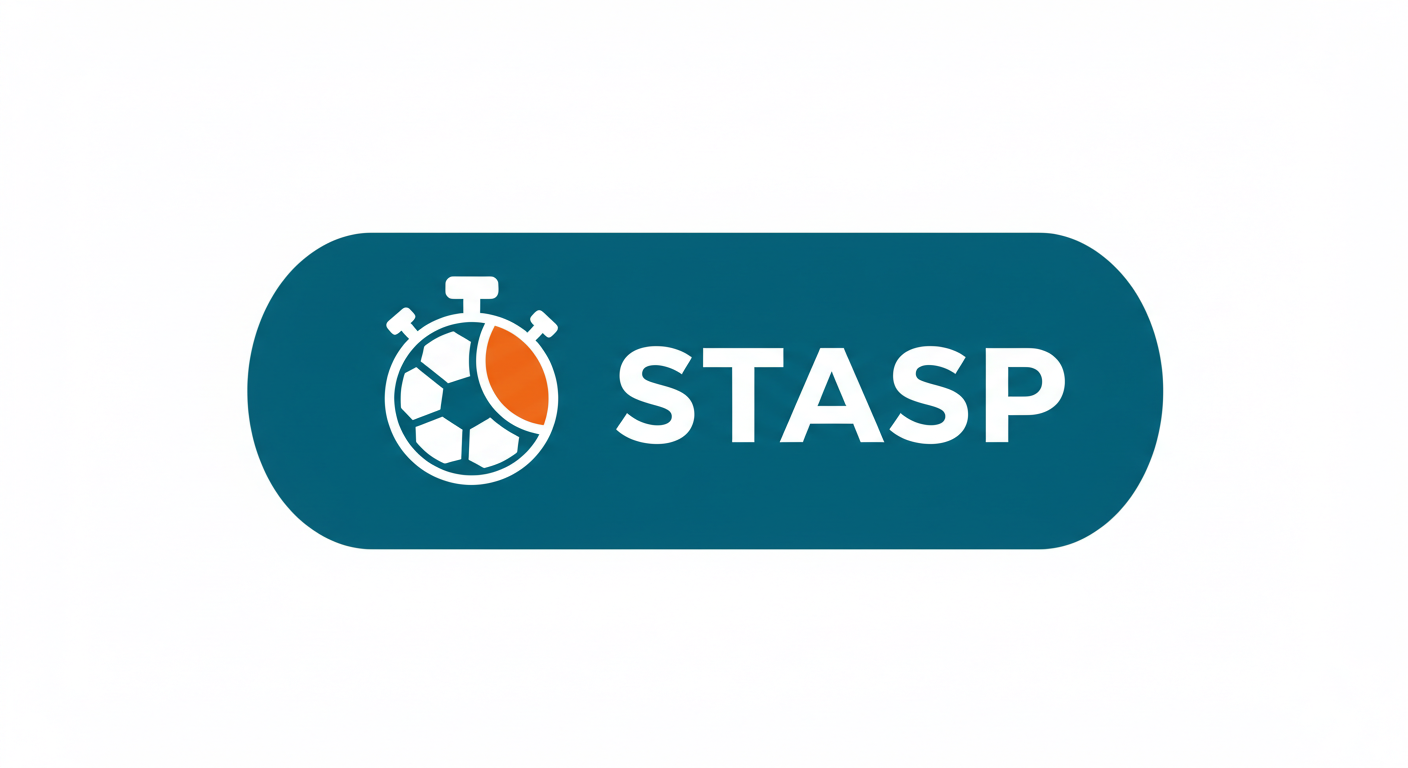
STASP
Sports Timetabling with Answer Set Programming
By: Mahir Ahammed, Roanda Muedi
Supervised By: Jesse Heyninck
This project explores the use of Answer Set Programming (ASP) as a declarative paradigm to solve the classic combinatorial sports timetabling problem. ASP allows scheduling rules and constraints to be expressed in a high-level, human-readable form, which...
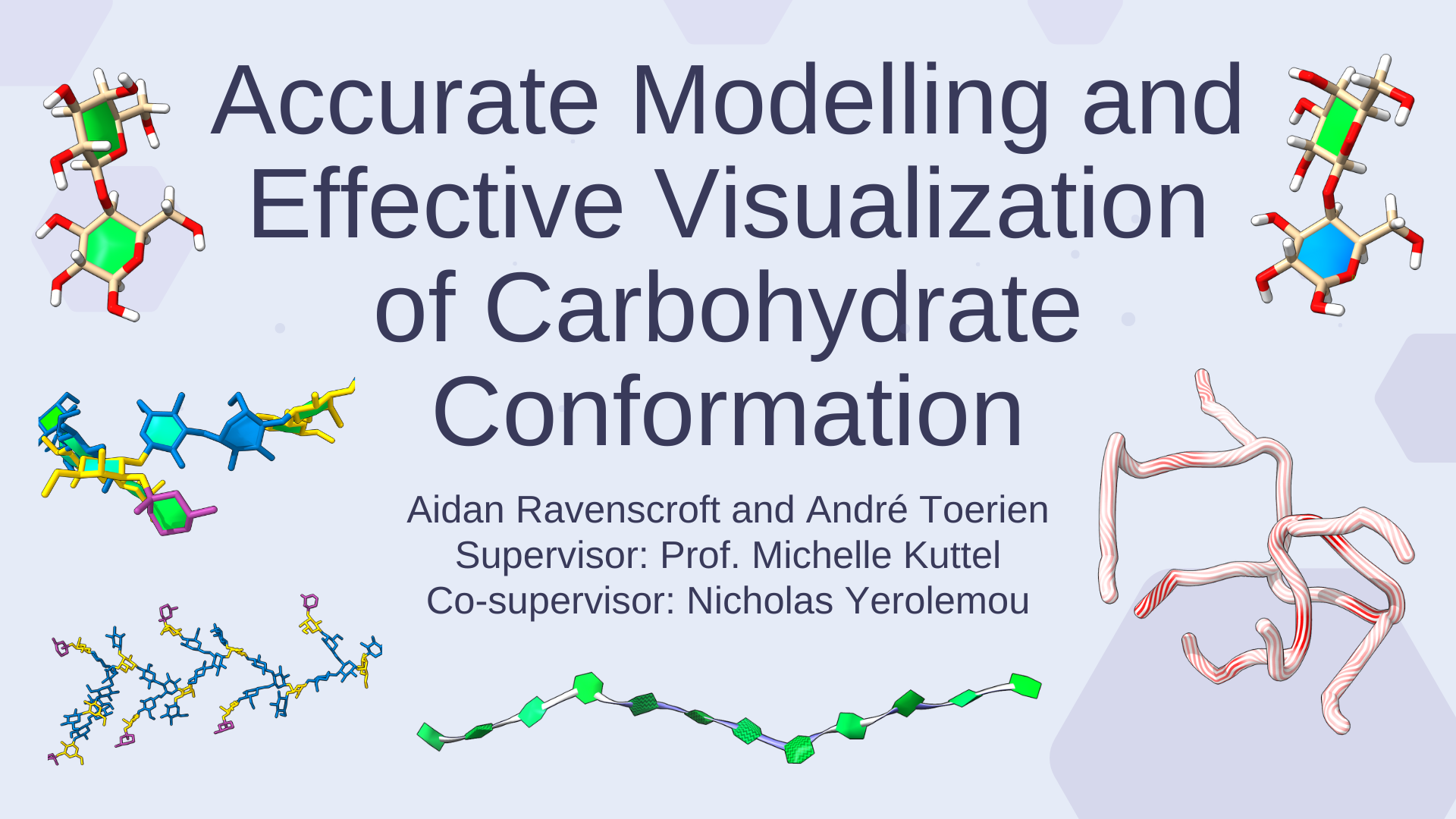
Accurate Modelling and Effective Visualization of Carbohydrate Conformation
By: Andre Toerien, Aidan Ravenscroft
Supervised By: Michelle Kuttel, Nicholas Yerolemou
Carbohydrates play critical roles in biological processes, and their interactions depend on their 3D shapes, or conformations. Understanding these conformations, through computer modelling and visualization, is therefore key to modern drug and vaccine...
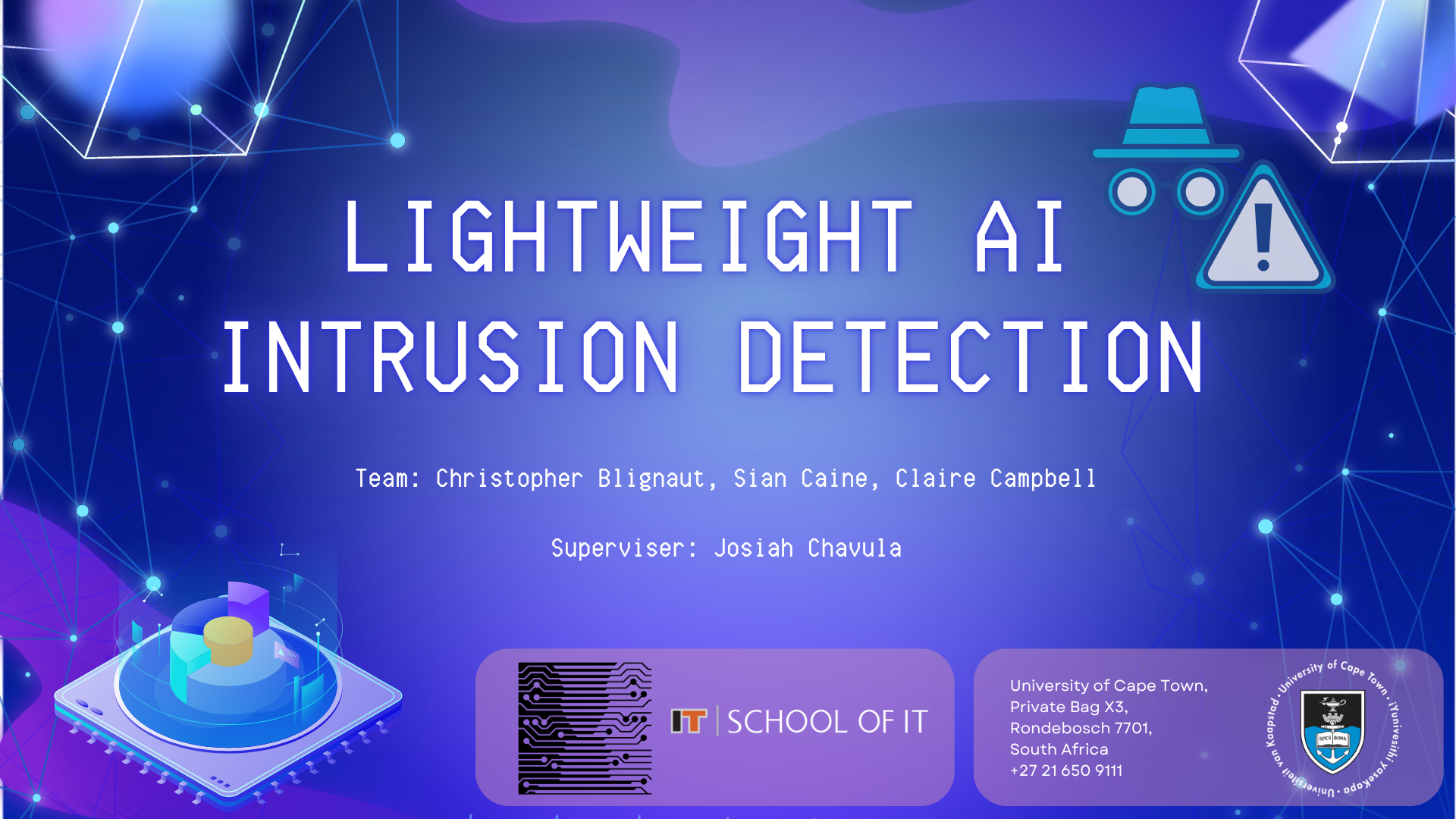
Lightweight AI Intrusion Detection
LAIDS
By: Sian Caine, Claire Campbell, Christopher Blignaut
Supervised By: Josiah Chavula
Intrusion detection systems (IDS) monitor network traffic for malicious activity. However, many AI-based IDSs are too resource-heavy for edge deployment, leaving resource-constrained portions of networks unguarded. The main objective of this study are to...

Investigating Deep Learning Solutions to Fish Identification and Classification
By: Joseph Goldblatt, Catalina Althoff-Thomson, Max Elkington
Supervised By: Patrick Marais, Jonathan Shock
Fishery managers, marine biologists, ecologists, and conservationists all rely on accurate estimates of fish population size and composition. Recently, there has been a growing interest in the use of Remote Underwater Video (RUV) methods for fish...
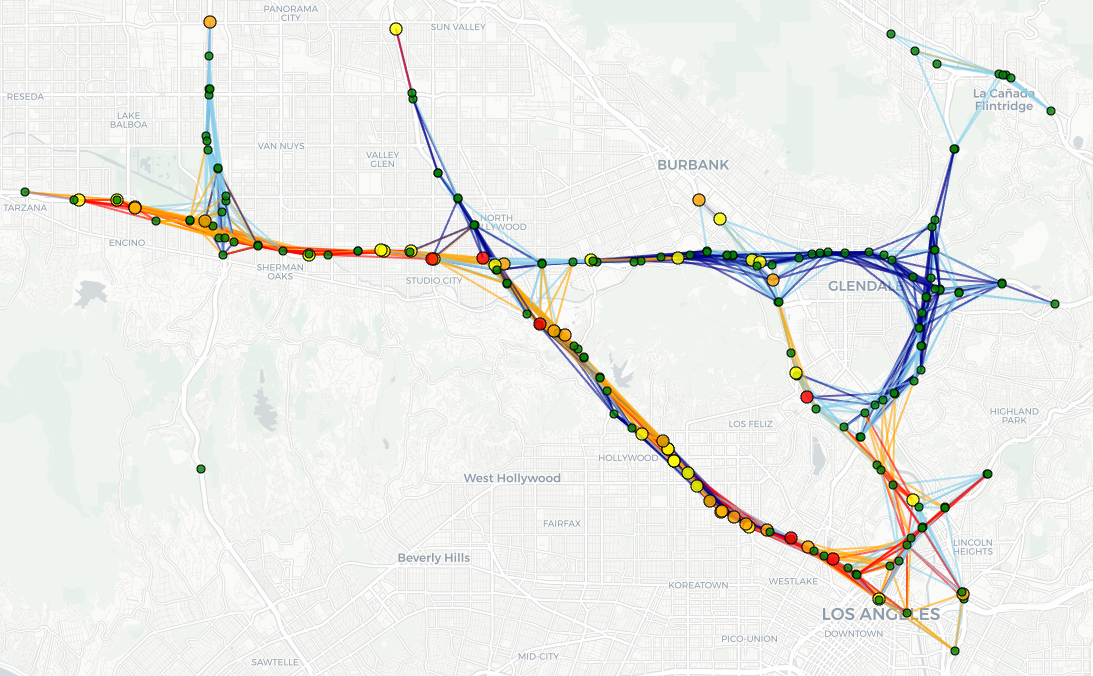
Traffic Flow
An Analysis of STGNNs through Visualization
By: Raaziq Parkar, Mohammad Arshad Hussain
Supervised By: Deshen Moodley
Traffic is a highly dynamic system containing spatial, temporal and random patterns. Spatial Temporal Graph Neural Networks(STGNNs) model traffic as an evolving graph, dynamically capturing both spatial and temporal patterns. Current evaluation metrics...
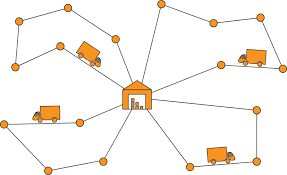
The Dynamic Vehicle Routing Problem
By: Jayden Moore, Ryan Schapiro, Aidan Brand
Supervised By: Krupa Prag
The Dynamic Vehicle Routing Problem (DVRP) extends the classical Vehicle Routing Problem by incorporating dynamic and uncertain elements, such as stochastic customer requests, making it more applicable to real-world logistics. Unlike static routing where...
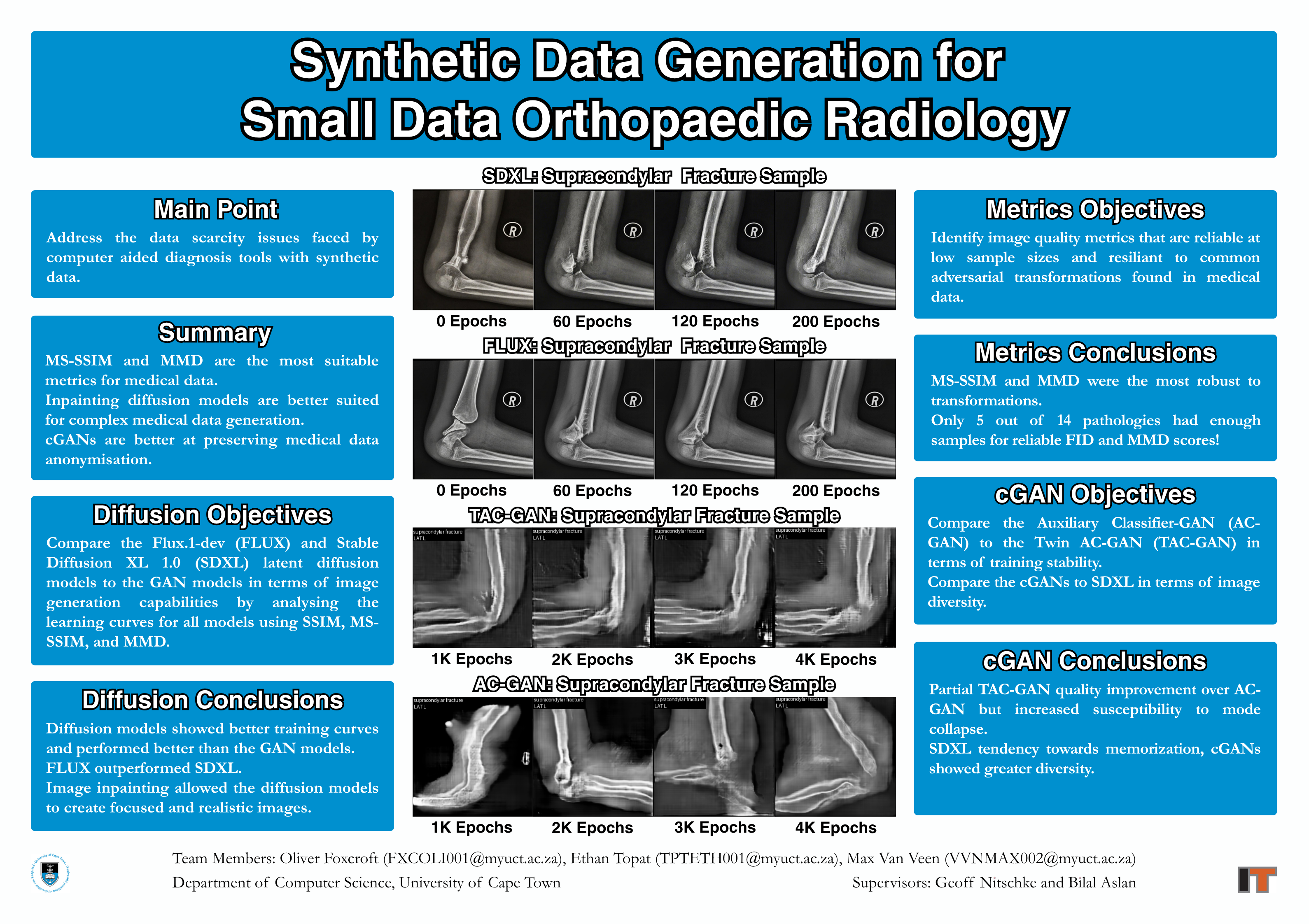
Synthetic Data Generation for Small Data Orthopedic Radiology
By: Max Van Veen, Oliver Foxcroft, Ethan Topat
Supervised By: Geoff Nitschke, Bilal Aslan
Address the data scarcity issues faced by automated medical classification methods using machine learning models for synthetic data generation with an appropriate set of metrics to evaluate their quality and diversity performance.

A Performance and Resilience Analysis of SANReN
A Spectral and Centrality Metric Framework for Resilient Network Topology Design and Analysis
By: Kerry-Lynn Whyte, Nicolas Wise, Alex White
Supervised By: Josiah Chavula, Michelle Kuttel
The South African National Research and Education Network (SANReN) provides the high-speed connectivity required for research collaboration and education but SANReN faces challenges related to rising demand, congestion, and vulnerability to node and edge...
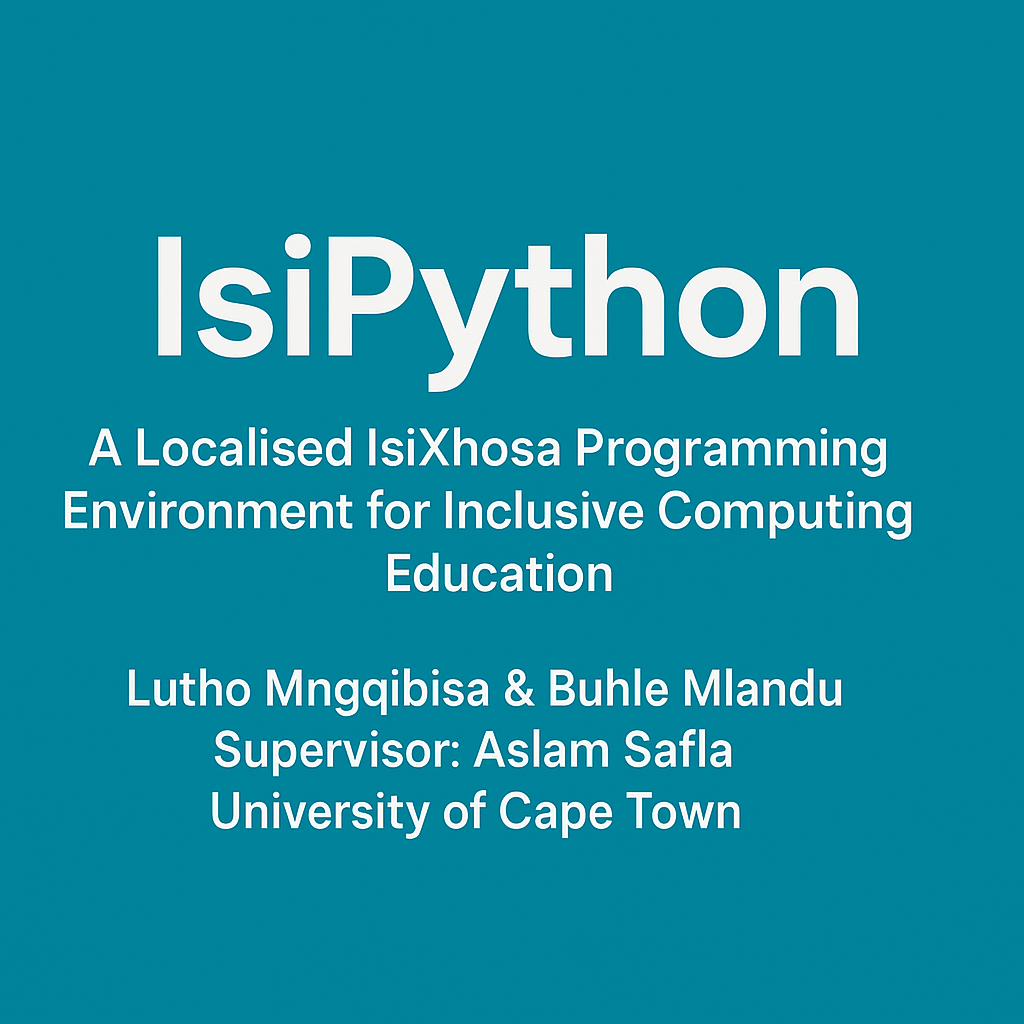
IsiPython: A Localised IsiXhosa Programming Environment for Inclusive Computing Education
Combining Language, Learning, and Code to Make Programming More Accessible
By: Lutho Mngqibisa, Buhle Mlandu
Supervised By: Aslam Safla
The dominance of English in programming languages creates barriers for South African students whose primary language is not English, particularly in early Computer Science education. This forces learners to understand programming concepts while...

Data Driven Control
Reinforcement Learning versus Classical control for Control Systems
By: Ben Ruijsch van Dugteren, Nathan Wells, Nicholas Cristaudo
Supervised By: Krupa Prag
This study examines the application of deep reinforcement learning to data-driven control and benchmarks it against classical proportional–integral–derivative control. Two system classes are considered: mechanical systems (inverted pendulum and...

Redirected Walking in VR
By: Prashanth Padiachy, Oscar Field, Kyle Fagan
Supervised By: James Gain
Our project explores how different VR locomotion techniques can be combined with Redirected Walking (RDW) to enable natural interaction with physical props in small tracked spaces. We developed three systems in Unity using the HTC Vive Pro: Free Teleport...

MyAdvisor
Virtual Curriculum Assistant
By: Dylan Howard, Ethan Allies, Mitchell Flanegan
Supervised By: Aslam Safla, Nicholas Yerolemou
MyAdvisor is a centralized hub for UCT advising, built to simplify handbooks, streamline advisor access, and support degree planning. Instead of navigating scattered portals and static PDFs, students get one clear, interactive system that works on both...
31
Projects0
Partners10
CategoriesShow
Showcase YearInterested in Collaborating?
Join our community of innovators and help shape the future of technology.